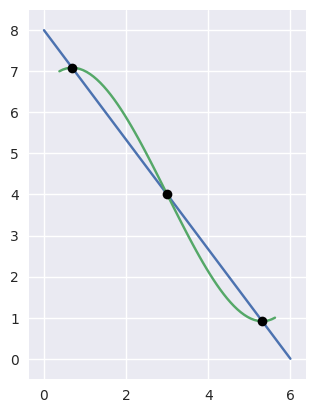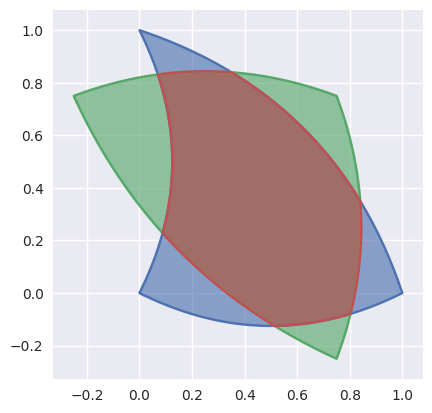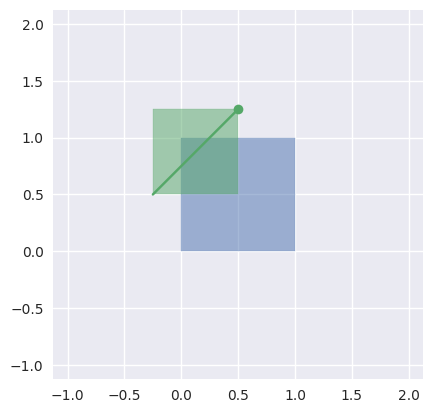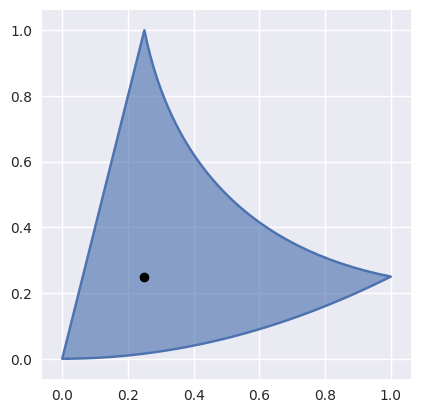Development¶
Here are some pointers for hacking on bezier.
Adding Features¶
In order to add a feature to bezier:
Discuss: File an issue to notify maintainer(s) of the proposed changes (i.e. just sending a large PR with a finished feature may catch maintainer(s) off guard).
Add tests: The feature must work fully on CPython versions 3.6, 3.7 and 3.8 and on PyPy 3; on Linux, macOS and Windows. In addition, the feature should have 100% line coverage.
Documentation: The feature must (should) be documented with helpful doctest examples wherever relevant.
Binary Extension¶
Many low-level computations have alternate implementations in Fortran. See the Python Binary Extension page for a more detailed description.
Building / Compiling¶
To compile the binary extension (with a Fortran compiler installed) run:
$ python setup.py build_ext --inplace
$ # OR
$ python setup.py build_ext --inplace --fcompiler=${FC}
By default the Fortran code will be compiled in “optimized” mode, which
may make debugging more difficult. To compile with debug symbols, without
optimizations that move code around, etc. use the DEBUG environment
variable:
$ DEBUG=True python setup.py build_ext --inplace
Using distutils and numpy.distutils to compile Fortran is not
“fully-supported” (i.e. the tooling is ad-hoc). As a result, there is a
decent amount of code in setup.py, setup_helpers.py,
setup_helpers_macos.py and setup_helpers_windows.py to specify the
build process. To make sure these are working as expected, it’s possible to
track how the extension is being installed. To actually make sure the
correct compiler commands are invoked, provide a filename as the
BEZIER_JOURNAL environment variable and then the commands invoked will
be written there:
$ BEZIER_JOURNAL=$(pwd)/journal.txt python setup.py build_ext --inplace
The nox session check_journal uses this journaling option to verify
the commands used to compile the extension in Linux on CircleCI, in
macOS on Travis CI and in Windows on AppVeyor.
As the build complexity grows, it may make more sense to transition the steps out of Python and into CMake, SCons or another build tool.
To explicitly disable the building of the extension, the
BEZIER_NO_EXTENSION environment variable can be used:
$ BEZIER_NO_EXTENSION=True .../bin/python -m pip install .
This environment variable is actually used for the nox -s docs session
to emulate the RTD build environment (where no Fortran compiler is
present).
Dependencies¶
Currently, the src/fortran/quadpack directory has a subset of Fortran 77
subroutines from QUADPACK. These are Public Domain, so they do not
conflict with the Apache 2.0 license (as far as we know). In addition it
contains another popular subroutine from NETLIB: d1mach (which the
QUADPACK subroutines depend on).
QUADPACK is used to perform numerical quadrature to compute the length of a curve segment.
Running Unit Tests¶
We recommend using Nox to run unit tests:
$ nox -s "unit-3.6"
$ nox -s "unit-3.7"
$ nox -s "unit-3.8"
$ nox -s "unit-pypy3"
$ nox -s unit # Run all versions
However, pytest can be used directly (though it won’t manage dependencies or build the binary extension):
$ PYTHONPATH=src/python/ python3.6 -m pytest tests/unit/
$ PYTHONPATH=src/python/ python3.7 -m pytest tests/unit/
$ PYTHONPATH=src/python/ python3.8 -m pytest tests/unit/
$ PYTHONPATH=src/python/ pypy3 -m pytest tests/unit/
Testing the Binary Extension¶
When using nox, the bezier package will automatically be installed
into a virtual environment and the binary extension will be built during
install.
However, if the tests are run directly from the source tree via
$ PYTHONPATH=src/python/ python -m pytest tests/unit/
some unit tests may be skipped. The unit tests that explicitly exercise the
binary extension will skip (rather than fail) if the extension isn’t
compiled (with build_ext --inplace) and present in the source tree.
Test Coverage¶
bezier has 100% line coverage. The coverage is checked
on every build and uploaded to coveralls.io via the
COVERALLS_REPO_TOKEN environment variable set in
the CircleCI environment.
To run the coverage report locally:
$ nox -s cover
$ # OR
$ PYTHONPATH=src/python/ python -m pytest \
> --cov=bezier \
> --cov=tests.unit \
> tests/unit/
Slow Tests¶
To run unit tests without tests that have been (explicitly)
marked slow, use the --ignore-slow flag:
$ nox -s "unit-3.6" -- --ignore-slow
$ nox -s "unit-3.7" -- --ignore-slow
$ nox -s "unit-3.8" -- --ignore-slow
$ nox -s unit -- --ignore-slow
These slow tests have been identified via:
$ ...
$ nox -s "unit-3.8" -- --durations=10
and then marked with pytest.mark.skipif.
Slow Install¶
Installing NumPy with PyPy can take upwards of two minutes and installing SciPy can take as much as seven minutes. This makes it prohibitive to create a new environment for testing.
In order to avoid this penalty, the WHEELHOUSE environment
variable can be used to instruct nox to install NumPy and SciPy
from locally built wheels when installing the pypy3 sessions.
To pre-build NumPy and SciPy wheels:
$ pypy3 -m virtualenv pypy3-venv
$ pypy3-venv/bin/python -m pip wheel --wheel-dir=${WHEELHOUSE} numpy
$ pypy3-venv/bin/python -m pip install ${WHEELHOUSE}/numpy*.whl
$ pypy3-venv/bin/python -m pip wheel --wheel-dir=${WHEELHOUSE} scipy
$ rm -fr pypy3-venv/
In addition to the WHEELHOUSE environment variable, the paths
${HOME}/wheelhouse and /wheelhouse will also be searched for
pre-built wheels.
Alternatively, wheels can be downloaded from pypy-wheels, however
the SciPy wheel will still require libatlas-dev, libblas-dev and
liblapack-dev.
The Docker image for the CircleCI test environment has already
pre-built these wheels and stored them in the /wheelhouse directory.
So, in the CircleCI environment, the WHEELHOUSE environment
variable is set to /wheelhouse.
Functional Tests¶
Line coverage and unit tests are not entirely sufficient to
test numerical software. As a result, there is a fairly
large collection of functional tests for bezier.
These give a broad sampling of curve-curve intersection, triangle-triangle intersection and segment-box intersection problems to check both the accuracy (i.e. detecting all intersections) and the precision of the detected intersections.
To run the functional tests:
$ nox -s "functional-3.6"
$ nox -s "functional-3.7"
$ nox -s "functional-3.8"
$ nox -s "functional-pypy3"
$ nox -s functional # Run all versions
$ # OR
$ PYTHONPATH=src/python/ python3.6 -m pytest tests/functional/
$ PYTHONPATH=src/python/ python3.7 -m pytest tests/functional/
$ PYTHONPATH=src/python/ python3.8 -m pytest tests/functional/
$ PYTHONPATH=src/python/ pypy3 -m pytest tests/functional/
For example, the following curve-curve intersection is a functional test case:

and there is a Curve-Curve Intersection document which captures many of the cases in the functional tests.
A triangle-triangle intersection functional test case:

a segment-box functional test case:

and a “locate point on triangle” functional test case:

Functional Test Data¶
The curve-curve and triangle-triangle intersection test cases are stored in JSON files:
This way, the test cases are programming language agnostic and can be
repurposed. The JSON schema for these files are stored in the
tests/functional/schema directory.
Coding Style¶
Code is PEP8 compliant and this is enforced with flake8 and Pylint.
To check compliance:
$ nox -s lint
A few extensions and overrides have been specified in the pylintrc
configuration for bezier.
Docstring Style¶
We require docstrings on all public objects and enforce this with
our lint checks. The docstrings mostly follow PEP257
and are written in the Google style, e.g.
Args:
path (str): The path of the file to wrap
field_storage (FileStorage): The :class:`FileStorage` instance to wrap
temporary (bool): Whether or not to delete the file when the File
instance is destructed
Returns:
BufferedFileStorage: A buffered writable file descriptor
In order to support these in Sphinx, we use the Napoleon extension. In addition, the sphinx-docstring-typing Sphinx extension is used to allow for type annotation for arguments and result (introduced in Python 3.5).
Documentation¶
The documentation is built with Sphinx and automatically
updated on RTD every time a commit is pushed to master.
To build the documentation locally:
$ nox -s docs
$ # OR (from a Python 3.6 or later environment)
$ PYTHONPATH=src/python/ ./scripts/build_docs.sh
Documentation Snippets¶
A large effort is made to provide useful snippets in documentation. To make sure these snippets are valid (and remain valid over time), doctest is used to check that the interpreter output in the snippets are valid.
To run the documentation tests:
$ nox -s doctest
$ # OR (from a Python 3.6 or later environment)
$ PYTHONPATH=src/python/:. sphinx-build -W \
> -b doctest \
> -d docs/build/doctrees \
> docs \
> docs/build/doctest
Documentation Images¶
Many images are included to illustrate the curves / triangles / etc. under consideration and to display the result of the operation being described. To keep these images up-to-date with the doctest snippets, the images are created as doctest cleanup.
In addition, the images in the Curve-Curve Intersection document and this document are generated as part of the functional tests.
To regenerate all the images:
$ nox -s docs_images
$ # OR (from a Python 3.6 or later environment)
$ export MATPLOTLIBRC=docs/ GENERATE_IMAGES=True PYTHONPATH=src/python/
$ sphinx-build -W \
> -b doctest \
> -d docs/build/doctrees \
> docs \
> docs/build/doctest
$ python tests/functional/make_segment_box_images.py
$ python tests/functional/make_triangle_locate_images.py
$ python tests/functional/make_curve_curve_images.py
$ python tests/functional/make_triangle_triangle_images.py
$ unset MATPLOTLIBRC GENERATE_IMAGES PYTHONPATH
Continuous Integration¶
Tests are run on CircleCI (Linux), Travis CI (macOS) and AppVeyor (Windows) after every commit. To see which tests are run, see the CircleCI config, the Travis config and the AppVeyor config.
On CircleCI, a Docker image is used to provide fine-grained control over
the environment. There is a base python-multi Dockerfile that just has the
Python versions we test in. The image used in our CircleCI builds (from
bezier Dockerfile) installs dependencies needed for testing (such as
nox and NumPy).
On Travis CI, Matthew Brett’s multibuild is used to install “official” python.org CPython binaries for macOS. Then tests are run in 64-bit mode (NumPy has discontinued 32-bit support).
On AppVeyor, the binary extension is built and tested with both 32-bit and 64-bit Python binaries.
Release Process / Deploying New Versions¶
New versions are pushed to PyPI manually after a git tag is
created. The process is manual (rather than automated) for several
reasons:
The documentation and README (which acts as the landing page text on PyPI) will be updated with links scoped to the versioned tag (rather than
master). This update occurs via thedoc_template_release.pyscript.Several badges on the documentation landing page (
index.rst) are irrelevant to a fixed version (such as the “latest” version of the package).The build badges in the README and the documentation will be changed to point to a fixed (and passing) build that has already completed (will be the build that occurred when the tag was pushed). If the builds pushed to PyPI automatically, a build would need to link to itself while being run.
Wheels need be built for Linux, macOS and Windows. This process is becoming better, but is still scattered across many different build systems. Each wheel will be pushed directly to PyPI via twine.
The release will be manually pushed to TestPyPI so the landing page can be visually inspected and the package can be installed from TestPyPI rather than from a local file.
Supported Python Versions¶
bezier explicitly supports:
Supported versions can be found in the noxfile.py config.
Versioning¶
bezier follows calendar versioning.
It is currently in major version zero (0.y.z), which means that
anything may change at any time and the public API should not be
considered stable.
Environment Variables¶
This project uses environment variables for building the
bezier._speedup binary extension:
BEZIER_JOURNAL: If set to a path on the filesystem, all compiler commands executed while building the binary extension will be logged to the journal fileBEZIER_NO_EXTENSION: If set, this will indicate that only the pure Python package should be built and installed (i.e. without the binary extension).BEZIER_WHEEL: Indicates that the source is being built into a wheel. When this is true, some compiler flags (e.g.-march=native) will be removed since those flags can produce machine instructions that are too specific to the host platform / architecture.DEBUG: Indicates the binary extension should be built in debug mode.
for interacting with the system at import time:
PATH: On Windows, we add thebezier/extra-dllpackage directory to the path so that thebezier.dllshared libary can be loaded at import time for Python versions before 3.8. After 3.8, modifyingPATHno longer works for these purposes; theos.add_dll_directory()function is used.
and for running tests and interacting with Continuous Integration services:
WHEELHOUSE: If set, this gives a path to prebuilt NumPy and SciPy wheels for PyPy 3.GENERATE_IMAGES: Indicates tonox -s doctestthat images should be generated during cleanup of each test case.APPVEYOR: Indicates currently running on AppVeyor.CIRCLECI: Indicates currently running on CircleCI.READTHEDOCS: Indicates currently running on Read The Docs (RTD). This is used to tell Sphinx to use the RTD theme when not running on RTD.TRAVIS: Indicates currently running on Travis.TRAVIS_BUILD_DIR: Gives path to the Travis build directory. This is used to modify the command journal to make it deterministic (i.e. independent of the build directory).TRAVIS_OS_NAME: Gives the current operating system on Travis. We check that it isosx.